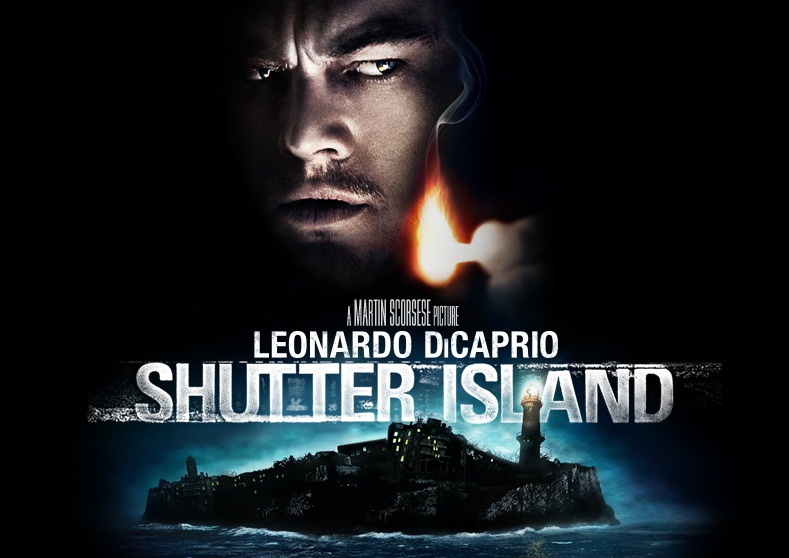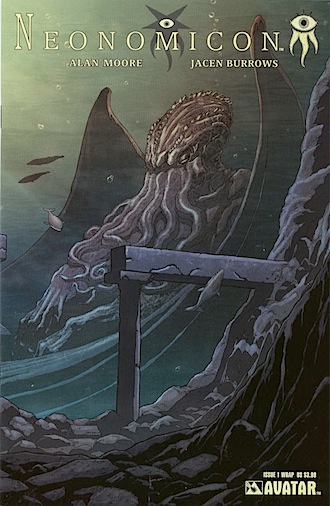new posts in all blogs
Viewing: Blog Posts Tagged with: avatar, Most Recent at Top [Help]
Results 1 - 25 of 31
How to use this Page
You are viewing the most recent posts tagged with the words: avatar in the JacketFlap blog reader. What is a tag? Think of a tag as a keyword or category label. Tags can both help you find posts on JacketFlap.com as well as provide an easy way for you to "remember" and classify posts for later recall. Try adding a tag yourself by clicking "Add a tag" below a post's header. Scroll down through the list of Recent Posts in the left column and click on a post title that sounds interesting. You can view all posts from a specific blog by clicking the Blog name in the right column, or you can click a 'More Posts from this Blog' link in any individual post.

By: Jerry Beck,
on 12/1/2016
Blog:
Cartoon Brew
(
Login to Add to MyJacketFlap)
JacketFlap tags:
Interviews,
Avatar,
Tech,
CGI,
Gravity,
The Matrix,
Digital Domain,
SIGGRAPH,
Sony Pictures Imageworks,
VR,
VFX,
Industrial Light & Magic,
Framestore,
Weta Digital,
Paul Debevec,
Furious 7,
photogrammetry,
SIGGRAPH Asia,
Google Daydream,
Spider-Man 2,
The Curious Case of Benjamin Button,
Add a tag
A deep dive with researcher Paul Debevec, who has been pivotal in some of the biggest innovations in vfx, including photoreal digital characters.
The post Paul Debevec: A Name You Absolutely Need to Know in CG, VFX, Animation, and VR appeared first on Cartoon Brew.

By:
Heidi MacDonald,
on 6/10/2016
Blog:
PW -The Beat
(
Login to Add to MyJacketFlap)
JacketFlap tags:
End of the World,
Lovecraft,
The Show,
nemo,
Alan Moore,
Dagon,
Providence,
Literary Comics,
Heart of Ice,
Top News,
Top Comics,
HPL,
Thomas Ligotti,
FHTAGN!,
Jacen Burrows,
Jimmy's End,
Neonomicon,
Nyarlathotep,
Pärnu-Jaagupi,
Robert Aickman,
Interviews,
Books,
Uncategorized,
Comics,
Cthulhu,
Avatar,
Culture,
Breaking News,
Add a tag
Somewhere deep in the bowels of the Internet, unbeknownst to all but the initiated, there’s an organisation that calls itself the Really Very Serious Alan Moore Scholars’ Group. Occasionally they get to actually communicate with the object of their adoration, The Great Moore himself. The most recent manifestation was in December 2015, when The Master […]
What do you call a live-action film that's 90% animated?
The post ‘Jungle Book’ Filmmakers Can’t Decide If They Made An Animated Film Or Not appeared first on Cartoon Brew.
Avatar Press might not be a publisher that most fans keep their eye on, however the company publishes key titles from important creators like Alan Moore (V for Vendetta) and Kevin O’Neil (The League of Extraordinary Gentlemen). Avatar recently launched a Kickstarter for the newest project from the two creators titled Cinema Purgatorio with a […]
During a special panel at New York Comic Con 2015, Dark Horse Comics in conjunction with Twentieth Century Fox Consumer Products and James Cameron’s Lightstorm Entertainment announced that AVATAR, the highest-grossing film in history, will expand into the world of comic books in anticipation of the three upcoming film sequels. The books are said to tell […]

By:
Katrina DeLallo,
on 8/30/2015
Blog:
The World Crafter's Inkspot
(
Login to Add to MyJacketFlap)
JacketFlap tags:
24,
Avatar,
Agents,
Grimm,
Supernatural,
Anthony Warlow,
TV shows,
LOLcat,
Daredevil,
Attolia,
Jack Bauer,
Jekyll and Hyde,
Phantom,
B&N,
Scheels,
Front Sight,
Crossing Lines,
Eugenides,
Griptilian,
Add a tag
Phantom and Front Sight and Edged-Weapons Training;
Jekyll and Hyde.
Eugenides complaining.
Anthony Warlow, the way that he sings -
These are a few of my favorite things.
Visiting
B&N, going to
Scheels;
Looking for
knives, testing how each one feels...
Avatar, Crossing Lines, 24 too.
I can make Pinkie Pie.
How about you?
Emailing agents for representation...
Going on Pinterest to ease agitation.
Polishing queries and
drawing a king...These are a few of my interesting things.
Matthew Murdock! The Winchesters!
Grimm makes me feel sad. :'(
I simply put on something Josh Groban sings,
and then I don't feel so bad!
GOD BLESS!
~Cat
Since I last posted (pretty much a month ago exactly) I have seen two movies in theaters, written about three quarters of the first half of a novel, remembered how much I enjoy baseball, started watching Avatar, and signed up for hand-to-hand combat classes at Front Sight.
For all y'all who don't know what Front Sight is, basically it's a gun school. You go there, they teach you how to safely use/carry firearms, so you don't go out literally
half-cocked and accidentally cause
mayhem rather than
assistance.
It teaches you how to be a responsible gun owner. MmmHmmm. Anyhoozle, so I'm signed up for the hand-to-hand combat part of it (because it is my first time and I'm a little intimidated at the idea of doing guns first) and I shall be heading down to Pahrump tomorrow - along with my sister Amanda, and our "sister/friend" Sammi. I am trying to figure out how to wear pants. As I am strictly a shirt and skirt kind of girl, pants are a whole 'nother kind of ballgame. But one simply cannot wear skirts to a martial arts type of setting. Awkward.
 |
| Unless, of course, you're Golden Sparrow. |
I saw MINIONS and ANT-MAN.
I gotta say, I was a little disappointed with the Minion movie. I enjoyed the bits with the actual minions, but there was some stuff in there that I thought was totally unnecessary and inappropriate for kids - such as that disgustingly overweight sumo wrestler wearing next to nothing and leaving NOTHING to the imagination.
The Cat did not approve. Also, I kind of would have preferred that the Minions met Gru earlier, and worked together to bring down the baddie Scarlet, even though Sandra Bullock voiced Scarlet and I could just "see" her getting into the role. I felt they could have done MORE with the movie, but instead relied on people being such fans of the minions they would overlook some loose plotting.
There really was some funny stuff, like Stuart and his fire hydrant:
But overall, I thought it could have been fabulous rather than just good.
ANT-MAN, however... yeah, I liked Ant-Man. Instead of being like the Avengers (WHICH I ADORE, BY THE WAY! IN CASE YOU THOUGHT I DIDN'T), Ant-Man sort of goes back to the "simple" Marvel movies, focusing on small but important bad guys, and instead of saving the world focusing more on just bringing down the single villain. Plus,
Scott Lang (Ant-Man himself) was freakin' hilarious, and his stupid criminal friends were adorable idiots. The script was spot on, and I surprised myself by actually liking Michael Douglas. Normally, I don't like anything about him, but he was a really good character in the movie and I quite liked him. So, I would recommend you watch Ant-Man, but I would advise you to wait on Minions until it comes out on DVD. :-)
As for my writing, I'm knocking out the first half of my novel quite rapidly. It's going to be told from two points-of-view, but since the timeline is a little "weird" for one character, I'm having a hard time switching back and forth, so I'm doing one character at a time, and I'll fit them together later. (All hail the revision process!) Besides, the second half will need a bit more research into the landscape, and mapping out the world being travelled.
So, I'm procrastinating on the part. But the completed project will be great, I promise!
That's all for now. Hope y'all have a great day!
God bless!
The Cat

By: Jerry Beck,
on 6/21/2015
Blog:
Cartoon Brew
(
Login to Add to MyJacketFlap)
JacketFlap tags:
Avatar,
Feature Film,
The Incredibles,
Pixar,
Frozen,
Inside Out,
toy story 3,
Illumination Entertainment,
Pete Docter,
Kyle Balda,
Box Office Report,
Pierre Coffin,
Minions,
Jurassic World,
Dragon Ball Z: Resurrection F,
Tadayoshi Yamamuro,
The Day After Tomorrow,
Add a tag
Pete Docter's latest smashes opening weekend box office record for an original film.

By: PennyF,
on 12/28/2014
Blog:
OUPblog
(
Login to Add to MyJacketFlap)
JacketFlap tags:
Books,
Literature,
Cinderella,
fairy tales,
Avatar,
animation,
Disney,
Rapunzel,
grimm,
Snow White,
once upon a time,
Pixar,
cinema,
Tangled,
Frozen,
Grimm brothers,
*Featured,
Jurassic Park,
Disney animation,
Arts & Humanities,
fairy tale history,
Add a tag
Movie producers have altered the way fairy tales are told, but in what ways have they been able to present an illusion that once existed only in the pages of a story? Below is an excerpt from Marina Warner’s Once Upon a Time that explores the magic that movies bring to the tales:
From the earliest experiments by George Meliès in Paris in the 1890s to the present day dominion of Disney Productions and Pixar, fairy tales have been told in the cinema. The concept of illusion carries two distinct, profound, and contradictory meanings in the medium of film: first, the film itself is an illusion, and, bar a few initiates screaming at the appearance of a moving train in the medium’s earliest viewings, everyone in the cinema knows they are being stunned by wonders wrought by science. All appearances in the cinema are conjured by shadow play and artifice, and technologies ever more skilled at illusion: CGI produces living breathing simulacra—of velociraptors (Jurassic Park), elvish castles (Lord of the Rings), soaring bionicmonsters (Avatar), grotesque and terrifying monsters (the Alien series), while the modern Rapunzel wields her mane like a lasso and a whip, or deploys it to make a footbridge. Such visualizations are designed to stun us, and they succeed: so much is being done for us by animators and filmmakers, there is no room for personal imaginings. The wicked queen in Snow White (1937) has become imprinted, and she keeps those exact features when we return to the story; Ariel, Disney’s flame-haired Little Mermaid, has eclipsed her wispy and poignant predecessors, conjured chiefly by the words of Andersen’s story
A counterpoised form of illusion, however, now flourishes rampantly at the core of fairytale films, and has become central to the realization on screen of the stories, especially in entertainment which aims at a crossover or child audience. Contemporary commercial cinema has continued the Victorian shift from irresponsible amusement to responsible instruction, and kept faith with fairy tales’ protest against existing injustices. Many current family films posit spirited, hopeful alternatives (in Shrek Princess Fiona is podgy, liverish, ugly, and delightful; in Tangled, Rapunzel is a super heroine, brainy and brawny; in the hugely successful Disney film Frozen (2013), inspired by The Snow Queen, the younger sister Anna overcomes ice storms, avalanches, and eternal winter to save Elsa, her elder). Screenwriters display iconoclastic verve, but they are working from the premise that screen illusions have power to become fact. ‘Wishing on a star’ is the ideology of the dreamfactory, and has given rise to indignant critique, that fairy tales peddle empty consumerism and wishful thinking. The writer Terri Windling, who specializes in the genre of teen fantasy, deplores the once prevailing tendency towards positive thinking and sunny success:
The fairy tale journey may look like an outward trek across plains and mountains, through castles and forests, but the actual movement is inward, into the lands of the soul. The dark path of the fairytale forest lies in the shadows of our imagination, the depths of our unconscious. To travel to the wood, to face its dangers, is to emerge transformed by this experience. Particularly for children whose world does not resemble the simplified world of television sit-coms . . . this ability to travel inward, to face fear and transform it, is a skill they will use all their lives. We do children—and ourselves—a grave disservice by censoring the old tales, glossing over the darker passages and ambiguities
Fairy tale and film enjoy a profound affinity because the cinema animates phenomena, no matter how inert; made of light and motion, its illusions match the enchanted animism of fairy tale: animals speak, carpets fly, objects move and act of their own accord. One of the darker forerunners of Mozart’s flute is an uncanny instrument that plays in several ballads and stories: a bone that bears witness to a murder. In the Grimms’ tale, ‘The Singing Bone’, the shepherd who finds it doesn’t react in terror and run, but thinks to himself, ‘What a strange little horn, singing of its own accord like that. I must take it to the king.’ The bone sings out the truth of what happened, and the whole skeleton of the victim is dug up, and his murderer—his elder brother and rival in love—is unmasked, sewn into a sack, and drowned.
This version is less than two pages long: a tiny, supersaturated solution of the Grimms: grotesque and macabre detail, uncanny dynamics of life-in-death, moral piety, and rough justice. But the story also presents a vivid metaphor for film itself: singing bones. (It’s therefore apt, if a little eerie, that the celluloid from which film stock was first made was itself composed of rendered-down bones.)
Early animators’ choice of themes reveals how they responded to a deeply laid sympathy between their medium of film and the uncanny vitality of inert things. Lotte Reiniger, the writer-director of the first full-length animated feature (The Adventures of Prince Achmed), made dazzling ‘shadow puppet’ cartoons inspired by the fairy tales of Grimm, Andersen, and Wilhelm Hauff; she continued making films for over a thirty-year period, first in her native Berlin and later in London, for children’s television. Her Cinderella (1922) is a comic—and grisly— masterpiece.
Early Disney films, made by the man himself, reflect traditional fables’ personification of animals—mice and ducks and cats and foxes; in this century, by contrast, things come to life, no matter how inert they are: computerization observes no boundaries to generating lifelike, kinetic, cybernetic, and virtual reality.
Featured image credit: “Dca animation building” by Carterhawk – Own work. Licensed under CC-BY-SA 3.0 via Wikimedia Commons.
The post Techno-magic: Cinema and fairy tale appeared first on OUPblog.


By: ChloeF,
on 2/28/2014
Blog:
OUPblog
(
Login to Add to MyJacketFlap)
JacketFlap tags:
Gone with the Wind,
academy award,
*Featured,
TV & Film,
film industry,
Arts & Leisure,
oscars 2014,
Micahel Wood,
duhamel,
moviegoer,
the oscars,
VSI,
very short introduction,
movies,
film,
hollywood,
Avatar,
oscars,
Very Short Introductions,
Add a tag

With the Oscars round the corner, we’re delving into Film: A Very Short Introduction. Here’s an extract from Chapter 3 of Michael Wood’s book. In this extract he looks at the industry and the role of the moviegoer.
Film began as a very small business, a dramatic invention but a tiny piece of the world of entertainment. It was an act among others in a variety show. Very soon, though, there were shows composed only of films, and there were special places for their showing. A cinema called the Nickleodeon opened in Pittsburgh in 1905, and by 1907 there were 4,000 such places in the United States. Something resembling an industry developed in France, Italy, England, and Germany too, and audiences grew and grew across the world. Studios were born. Pathé and Gaumont in France; UFA in Germany; Universal, Twentieth Century Fox, and Paramount in the USA. Hollywood itself, a small Californian town surrounded by orange groves, became a movie settlement because of its steady weather (and because California was thought to be far enough away from the lawsuits that rained down on experimenters and investors in New York). Something like the contours of later patterns of film-making began to form. Stars began to glitter. And above all, money began to gleam.

A whole support system blossomed: publicity machinery, fan magazines, prizes, record-kepping. Box-office results became the equivalent of sporting scores, or world championship boxing.
Avatar (2009) is the largest grossing picture ever made, unless we adjust for inflation, in which case the title goes to Gone with the Wind (1939), and Avatar moves to fourteenth place. The American Academy of Moton Pictures awarded its first Oscars in 1929, and has awarded them every year since. Programmes developed from sets of short films to single feature films plus supporting entries; and from there to the two film diet that was standard fare for so long. By 1929, 90 million cinema tickets were sold each week in America, with figures proportionally similar elsewhere. There were ups and downs during the Depression and the Second World War, but the figure had reached one hundred million by 1946. By 1955, however, the number was down to 46 million, not a whole lot more than the 40 million or so of 1922. Movie-houses, of which a little more later, rose and fell, naturally enough, to the same rhythm: there were 20,000 in America in 1947 and 11,000 in 1959.
Programmes often changed midweek, and shows were continuous, so you could come in at the middle of a film and stay till you got the middle again. Hence the now almost unintelligible phrase “This is where we came in”. There is a remarkable piece by the humorist Robert Benchley about a game he liked to play. Arriving, say, twenty minutes into a film, he would give himself five minutes to reconstruct the plot so far. Then he would interpret everything that followed in the light of his reconstruction. He would stay on to see how close he was – or pretend to see. He claimed many movies were improved by his method.
Theories of the Seventh Art arose, as well as plenty of attacks of the mindlessness of moviegoers. It was in reaction to one such attack that Walter Benjamin devloped an important piece of the argument of his essay “The Work of Art in the Age of its Technological Reproducibility” (various versions between 1935 and 1939). The French novelist George Duhamel had included an onslaught on cinema in his witty and gloomy book on America, Scénes de la vie future (1930). The relevant chapter is titled ‘cinematographic interlude or the entertainment of the free citizen’, and within the text, the cinema is called, in the same mode of a grand irony, a sanctury, a temple, an abyss of forgetfulness, and the cave of the monster. Duhamel says that film ‘requires no kind of effort’ and ‘presupposes no capacity for consecutive thought’, ‘aucune suite dans les idées.’ Benjamin agrees that film audiences are distracted but claims that there are forms of distraction that may function as localized, medium-specific attention. ‘Even the distracted person’ he says, thinking of the moviegoer, ‘can form habits. ‘The audience’ he adds, ‘is an examiner, but a distracted one’.
Michael Wood is Charles Barnwell Start Professor of English and Professor of Comparative Literature at Princeton University and the author of Film: A Very Short Introduction. You can see Michael talking about film.
The Very Short Introductions (VSI) series combines a small format with authoritative analysis and big ideas for hundreds of topic areas. Written by our expert authors, these books can change the way you think about the things that interest you and are the perfect introduction to subjects you previously knew nothing about. Grow your knowledge with OUPblog and the VSI series every Friday! Subscribe to Very Short Introductions articles on the OUPblog via emailor RSS.
Subscribe to the OUPblog via emailor RSS.
Subscribe to only film and television articles on the OUPblog via emailor RSS.
Image credit: By Coyau. CC-BY-SA-3.0-2.5-2.0-1.0. via Wikimedia Commons
The post Art and industry in film appeared first on OUPblog.

.jpeg?picon=3655)
By: alethea aka frootjoos,
on 4/3/2012
Blog:
Read Now Sleep Later
(
Login to Add to MyJacketFlap)
JacketFlap tags:
GeneYang,
DarkHorse,
TheLastAirbender,
Gurihiru,
bending,
LegendofKorra,
graphic novel,
comics,
Avatar,
4 stars,
2012,
Add a tag
ISBN 10/13: 1595828117 | 9781595828118
The wait is over! Ever since the conclusion of Avatar: The Last Airbender, its millions of fans have been hungry for more--and it's finally here!
This series of digests rejoins Aang and friends for exciting new adventures, beginning with a faceoff against the Fire Nation that th

By: Alice,
on 2/21/2012
Blog:
OUPblog
(
Login to Add to MyJacketFlap)
JacketFlap tags:
Avatar,
Martin Scorsese,
time,
3D,
loneliness,
Hugo,
Alfred Hitchcock,
james cameron,
casino,
Editor's Picks,
*Featured,
filmmaker,
Dial M For Murder,
TV & Film,
Arts & Leisure,
A Trip to the Moon,
Cinema of Loneliness,
Gangs of New York,
Georges Méliès,
history of film,
Robert Kolker,
Samuel Fuller,
Shock Corridor,
Shutter Island,
The Aviator,
The Departed,
kolker,
scorsese’s,
scorsese,
cameron’s,
hugomovie,
Add a tag
By Robert Kolker
“That’s that,” quoting Ace Rothstein at the end of Casino. I didn’t end the Martin Scorsese chapter on an optimistic note in the fourth edition of A Cinema of Loneliness. There is more than a hint that the Scorsese’s creative energies might be flagging.
My pessimism grew from the direction — or lack of direction — Scorsese’s films had taken over the past decade. I thought that the big productions of the 2000s — Gangs of New York, The Aviator, and The Departed — indicated some kind of flailing about for ideas. These films were not as lean and mean as the earlier gangster movies that worked at the speed of light and were deliriously comic in their basic brutality.

Copyright Paramount Pictures. Source: shutterisland.com.
Shutter Island seemed to seal the decline. An unofficial remake of Samuel Fuller’s 1963 Shock Corridor, the film could have been made, I thought, by anyone. It bore none of the hallmarks of Scorsese’s style and all of the hallmarks of an overwrought Hollywood gothic tale.
An obvious riposte to my pessimism is that I am not in a position to question an artist’s evolution. Scorsese no more than any other filmmaker is bound to repeat himself, and the great gangster and street films of his early period are a thing of the past. Artists change with time, and the results of that change may not be to everyone’s taste. At least not to mine.
With this in mind, I went to see Hugo with a lot of skepticism. Why would Scorsese make a film in 3D? The only reason I could come up with — aside from the fact that he might just wish to experiment with the old/new screen technology of the moment — is that Alfred Hitchcock made a 3D film when that format was first introduced in the 1950s: Dial M For Murder. Scorsese almost always roots his work in films of the past. His imagination is constructed of film. He is an amateur archivist, with a huge collection of movies that he watches continually. He has his cast and crew look at old movies when they are preparing a new one. His films become something of archival works themselves, full of allusions to their predecessors. But there is more to it than this.
I have resisted the recent 3D craze. I did go to see Avatar out of curiosity. James Cameron does not often repay curiosity. But something stood out in that film. The mise-en-scène of Cameron’s mythical world, with its floating vegetation in a liquid like atmosphere, reminded me of the underwater sequences of Georges Méliès’s A Trip to the Moon (Le voyage dans la lune, 1902). This magical film — Méliès was a magician as well as a filmmaker — was just one entry into his enormous filmography of fantasy filmmaking, his counter to the

By: Anastasia Goodstein,
on 9/20/2011
Blog:
Ypulse
(
Login to Add to MyJacketFlap)
JacketFlap tags:
avatar,
amazon,
facebook,
nascar,
Nickelodeon,
webkinz,
3d,
michelle obama,
YoYo,
Millennials,
Ypulse Essentials,
disney world,
demi lovato,
Kmart,
toys "R" us,
Unbroken,
Aldo,
Aldo Shoes for Life,
Anti-texting campaign,
Day of Play,
Mercury Insurance,
Add a tag
 Turn off the TV and head outdoors this Saturday for Nickelodeon’s Annual Day of Play (an international event that encourages kids and parents to be active. While technology can positively influence kids, Nickelodeon also wants to promote a healthy... Read the rest of this post
Turn off the TV and head outdoors this Saturday for Nickelodeon’s Annual Day of Play (an international event that encourages kids and parents to be active. While technology can positively influence kids, Nickelodeon also wants to promote a healthy... Read the rest of this post

Now this is kind of interesting. Avatar, publisher of some of the greatest writers in comics, like Alan Moore, Warren Ellis, Garth Ennis and so on, is switching distributors from Diamond to….BOOM!?
Wait Boom is a distributor? Not really, but they have their own distributor deal with Simon & Schuster for the US and Harper Collins for Canada. Avatar will be tagging along on Boom!’s truck route for a unique partnership.
We had the chance to chat informally with several Avatar personnel about this move at C2E2 — and it’s definitely a good one for them. Moore and (to a lesser extent) Ellis are perennial bookstore bestsellers, so being able to hop on that bandwagon should definitely help their trade program. Although not noted by anyone, really, Avatar significantly slowed their trade collection release schedule over the last few months; this deal enables them to get it going again.
Also, as we’ve seen before, when a comics publisher moves to a “real” book publisher, they have a bit of a transition to make from the wild and wooly world of comics to the “we must plan everything 8 months ahead” book world. Boom will be able to help Avatar get over that hump. Win/win!
Avatar’s director of sales Keith Davidsen had more to say about the move here, explaining that extremely extreme material like CROSSED (which features fetus eating and other fun stuff) will probably not be showing up at Barnes and Noble.
PR below:
For comic and graphic novel publishers, there are two different markets that we sell product to. Comic shops and independent novelty stores fall under the category of the “Direct Market” (also known as the “Hobby Market”). Nationwide booksellers like Amazon, Barnes & Noble, Borders, and Indigo fall under the category of “Book Market” (or “Mass Market”). The Book Market can also include library organizations and the massive retail store chains like Wal-Mart and Target.
Up until this announcement, Avatar Press had been represented into both the Direct Market and the Book Market by Diamond. Diamond has two distribution divisions — Diamond Comics and Diamond Books — that target those respective markets individually. Avatar Press will continue to be distributed to the Direct Market by the “Diamond Comics” division.
In fact, Avatar’s commitment to Diamond Comics is 100% exclusive for the Direct Market. Our products will still be available to order by your comic shop retailers, both individual comics and our trade paperback / hardcover collections. We’re very happy with how Diamond sells us to that market; it’s a mutually beneficial arrangement.
The change here is only for the Book Market. Before, if Barnes & Noble wanted to purchase Avatar books, they’d have to buy from Diamond. Now, they have to buy from Simon & Schuster (in the US book market) or HarperCollins Canada (in the Canadian book market). Simon and Harper are massive organizations with far-reaching sales representation. Therefore, the new partnership with Boom has opened the doorway for making our products more accessible to the mainstream. It’s a really great move. We couldn’t ask for better business partners in the book market than Boom, Simon, and
By: Stacy Nockowitz,
on 1/20/2011
Blog:
Some Novel Ideas
(
Login to Add to MyJacketFlap)
JacketFlap tags:
Meditations,
identity,
The Outsiders,
Rob Lowe,
#ksyb,
Picassohead,
Teachers Challenge,
Teachers Challenge Activity #4,
The Columbus Academy,
avatar,
Add a tag
 The hideous attempt at a PicassoHead of myself is at left. In the past, my students have absolutely loved this kooky web tool, so when it was suggested to make an avatar using it, I thought I'd have fun. Well, sure, it's fun when you want to make something weird and wild, but making an avatar for oneself? More like humiliating. Just to clarify, I don't look like that.
The hideous attempt at a PicassoHead of myself is at left. In the past, my students have absolutely loved this kooky web tool, so when it was suggested to make an avatar using it, I thought I'd have fun. Well, sure, it's fun when you want to make something weird and wild, but making an avatar for oneself? More like humiliating. Just to clarify, I don't look like that.
But in creating this (Teacher Challenge Activity #4), I started thinking about how I identify myself on the web. Sometimes, my avatar is a stack of books. Other times, I use the shield of my school. And then there are the times when I use a picture of all the cute guys from "The Outsiders" movie. Oh, and on Tweetdeck, I use an actual picture of myself (a terrible mistake that I addressed in an earlier post). That error in judgement aside, I can say that I generally identify myself as a book lover, a proud member of The Columbus Academy community (even more proud if we have a snow day tomorrow), and someone who has been kind of obsessed with The Outsiders for about 20 years.
Now, I'm not going to say that those three things tell you everything about me, not even close. I am also a great mom, a fabulous wife, a cancer survivor, an art aficionado, a writer, and a teacher. But those three things- books, the CA shield, and The Outsiders, are a good place to start if you're trying to understand me. My avatars are a metaphor for my identity. I am not just one thing, but an amalgamation of lots of things. Some days, I am that book lover, and I feel that being a librarian is the complete embodiment of who I am. Sometimes, I am my school. It is my home, a place of love and true joy for me. And then there are the times when I am just a nostalgic 80s girl. One who still, yes, still has a chance to nab Rob Lowe.
So, pay no attention to the picture at top left. That's not my avatar. That's not how I would ever identify myself. Instead, I present myself to you as:


Lauren, Publicity Assistant
Kathryn Kalinak is Professor of English and Film Studies at Rhode Island College. Her extensive writing on film music includes numerous articles and several books, the most recent of which is Film Music: A Very Short Introduction. Below, she has made predictions for the Oscar Music (Original Score) category, and  picked her favorites.
picked her favorites.
We want to know your thoughts as well! Who do you think will win the Oscar for Original Score? Original Song? Send your predictions to [email protected] by tomorrow, March 6, with the subject line “Oscars” and we’ll send a free copy of Film Music: A Very Short Introduction to the first 5 people who guessed correctly.
We also welcome you to tune in to WNYC at 2pm ET today to hear Kathryn discuss Oscar-nominated music on Soundcheck.
This Sunday’s Oscars will recognize an exceptionally fine slate of film scores, and it’s nice to see such a deserving group of composers. The nominees represent a range of films and scores including the lush and symphonic (Avatar), whimsical (Fantastic Mr. Fox), edgy and tension-producing (The Hurt Locker), eclectic and genre-bending (Sherlock Holmes), and beautifully melodic (Up). While there are always surprises, I’ve considered each composer and score, coming to the following conclusions and predictions.
On Avatar:
James Horner has been around a long time, having been nominated ten times in the last 32 years, and receiving Best Score and Best Song Oscars for Titanic. He’s a pro at what he does best: big, symphonic scores that hearken back to the classical Hollywood studio years. Horner’s music gives Avatar exactly what it needs—warmth and emotional resonance—and connects the audience to a series of images and characters that might be difficult to relate to otherwise. If Horner wins Sunday night, look for the evening to go Avatar’s way.
On Fantastic Mr. Fox
John Ehrenberg and J. Patrice McSherry are Professors of Political Science at Long Island University, Brooklyn Campus. Jose Ramon Sanchez is Associate Professor of Political Science at Long Island  University. Caroleen Marji Sayej is Assistant Professor of Government and International Relations at Connecticut College. Together they wrote The Iraq Papers, which offers a compelling documentary narrative and interpretation of this momentous conflict. In the post below, which first appeared here, the authors look at the parallels between Iraq and the blockbuster Avatar.
University. Caroleen Marji Sayej is Assistant Professor of Government and International Relations at Connecticut College. Together they wrote The Iraq Papers, which offers a compelling documentary narrative and interpretation of this momentous conflict. In the post below, which first appeared here, the authors look at the parallels between Iraq and the blockbuster Avatar.
At one key moment in the movie Avatar, the RDA corporation’s head of security, Colonel Miles Quaritch, launches an all out assault on the Na’vi natives. One of the characters, Max, working against the corporation, wearily described the corporation’s mobilization for the attack as “some kind of shock and awe campaign.“ Many have noted the connections between the RDA’s assault on the Na’vi and the U.S. Government’s invasion of Iraq in 2003. Both employed massive bombardment in a ruthless and brutal plan to quickly demoralize and defeat the opponent’s will. The connections are stronger yet. A 1996 document, “Shock and Awe: Achieving Rapid Dominance,” written for the U.S. National Defense University, also makes clear that the aim of this military strategy is not just to destroy. The objective is to intimidate and demoralize the civilian population by targeting fundamental civilian values or lives. As that 1996 military document clearly explains, “the aim is to convince the majority that resistance is futile.” That goal could be achieved, according to this “Shock and Awe” strategy by “depriving the enemy, in specific areas, of the ability to communicate, observe, and to interact.” This is exactly what the RDA Corporation tries to do by specifically destroying the Na’vi’s Tree of Voices. It is there that the Na’vi communicate with their ancestors. Since they have no books, telephones, libraries, television, radio, or computer networks, this is the central hub of Na’vi public consciousness.
Later, the RDA security forces launch a preemptive attack on the other major hub of Na’vi religion and culture, the Tree/Well of Souls. This time, the Avatar scientist Norm spells out how such a strike will force the Na’vi to capitulate to RDA. “If he takes out the Well of Souls — it’s over. It’s their main line to Eywa, to their ancestors — it’ll destroy them.” Quaritch and the RDA killed Na’vi warriors. But they were actually more interested in anything that would quickly and easily remove the Na’vi civilian population from the land and the valuable oil-like mineral, Unobtanium, beneath it. They targeted the Well of Souls precisely because they believed that the attack would shock and awe the Na’vi, demoralize them, and wreck their ability to maintain social cohesion. In the end, the Shock and Awe strategy used by the RDA Corporation on the planet Pandora ultimately failed.
I don't get to go out and see movies very often, so when I do, it's a very exciting event. And I like to choose movies I think (or have heard) are best experienced in a theater versus DVD at home a few months later. You know, like action flicks (The Bourne Ultimatum, Inglorius Basterds) or those with killer special effects. Or, from time to time, when I just can't wait for it to come out on DVD (Juno). Well, last week I saw a movie that was so much more than a movie. It was an experience. You might already know I'm talking about James Cameron's cinematic masterpiece, Avatar.

Interestingly, I hadn't really heard much word-of-mouth feedback from this particular movie. Just some basic praise like "cool" and "really creative" plus a lukewarm"Well, the special effects were good but the story itself was kinda lame." However, from the moment I put on my stylin' 3D glasses and scooted down the crowded row with my husband and 2 oldest sons in tow, I could tell I was in for a treat.
This little flick cost more to make than any other movie to date, several hundred million bucks. Apparently, the $500 million price tag you might have heard about is a tad inflated; but rest assured, it cost a pretty penny. James Cameron (who now has a star on the Hollywood Walk of Fame) came up with the idea for this movie about 15 years ago and had to wait until technology and resources could catch up with the magnitude of his vision. Then, the movie took over 4 years to produce.
The quality of the film--including the sound effects, music, special effects, acting, and writing--is spell-binding. It's an epic adventure, a love story, a character study, a spiritual journey, and a war--all happening in the fiercely spectacular world of Pandora. It was the most exciting and fun three hours and $8 I've spent in a very long time. I truly felt a part of the movie, and it took me a good fifteen minutes after the credits rolled to catch my breath. Literally.
Avatar is one of my favorite movies EVER! But I also have a special place in my heart for independent films; you know, the ones that might not have $500 million behind them? And that's why I'm so excited that the Sundance Film Festival is going strong here in Utah. On Wednesday night I get to go see happythankyoumoreplease in Ogden. I can't wait!
What are some movies you recommend seeing on the big screen? Have you seen Avatar yet? Are you more of a big blockbuster movie type, or do you prefer indies?



 Somewhere deep in the bowels of the Internet, unbeknownst to all but the initiated, there’s an organisation that calls itself the Really Very Serious Alan Moore Scholars’ Group. Occasionally they get to actually communicate with the object of their adoration, The Great Moore himself. The most recent manifestation was in December 2015, when The Master […]
Somewhere deep in the bowels of the Internet, unbeknownst to all but the initiated, there’s an organisation that calls itself the Really Very Serious Alan Moore Scholars’ Group. Occasionally they get to actually communicate with the object of their adoration, The Great Moore himself. The most recent manifestation was in December 2015, when The Master […]
 Avatar Press might not be a publisher that most fans keep their eye on, however the company publishes key titles from important creators like Alan Moore (V for Vendetta) and Kevin O’Neil (The League of Extraordinary Gentlemen). Avatar recently launched a Kickstarter for the newest project from the two creators titled Cinema Purgatorio with a […]
Avatar Press might not be a publisher that most fans keep their eye on, however the company publishes key titles from important creators like Alan Moore (V for Vendetta) and Kevin O’Neil (The League of Extraordinary Gentlemen). Avatar recently launched a Kickstarter for the newest project from the two creators titled Cinema Purgatorio with a […]































 picked her favorites.
picked her favorites.
 University.
University. 

you really love avatar. :) and ugh, that movie was soooo bad. worse than i thought it was going to be and i thought it was gonig to be pretty bad.